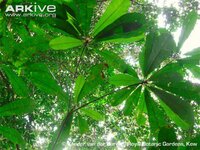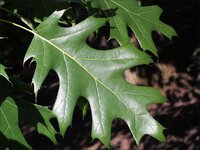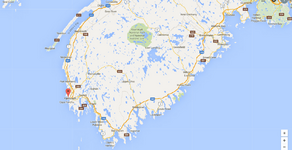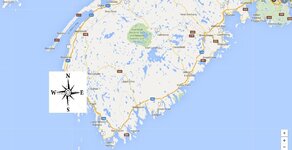treasure1822
Hero Member
- Dec 9, 2010
- 542
- 239
All Righty, lets take this one at a time. You say that the people of that area would have know if it was Oak or African Pearwood. So what would they have thought if the wood they were viewing was 25% denser and 16% heavier then Red Oak? Here is the source if you question it....
Pearwood (African) Lumber for Woodworkers - Friendly Service & Fast Shipping from Woodworkers Source
Comments: Sometimes called African Pear, though the wood bears little botanical relation to true Pear (Pyrus genus). Moabi is a very large African tree, frequently yielding figured lumber and veneer; not too unlike Makore. information from this site
Moabi | The Wood Database - Lumber Identification (Hardwoods)
here is a picture of a "African Pearwood"
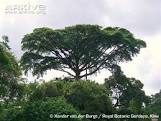
Okay, as for the second part....How many people would it take on a 140 acre Island to be considered populated enough to travel to one of the three university and enlist the help of one of their professors...Or would it have been even worth it seeing how it was such a small amount of trees.
Okay now, lets look at the third party. I think you need to add some more information on that. Too many variable to compare the Black Locust to the "Pearwood". As for the tree surviving the Atlantic cold, the only thing I can say is it adapted or went dormant for the cold weather,
Last but not least....Dismissing and Disrespecting, I wasn't talking about the Mi'kmaq.....I am refering to the Overton Stone and the Norumbega Vinland Stone, The "G" staone and the stone trialgle, the white granite stones with the 1/4" holes in them.....I about lost my mind when that "Expert" from "Curse of Oak Island" said the "Overton Carving" was a "Treaty" with the Portuguese. The "First Nation" believed in your words not a "Stone Carving" What people fail to realize is that stone carving is the first "Shepherd of Arcadia". Look at the "Shepherd of Arcadia" monument at Shugsborough Hall in the UK. What are the Shepherds of Arcadia? The answer is quite simple, they are what the shepherds are pointing to...."Stone Carvings". And what do the shepherds protect, " I! Tego arcana dei," God's secrets. So what does the first stone say? The circle with a cross in it is a First Nations symbol for the "Earth" and the 4 directions of the wind. But seeing the Templar cross in it signifies a Templars journey, northeast lies gifts from the gods. But how far, the waning mood which happens every 3 to 4 day....Think about it the Overton stone shows gifts from the gods of the First Nation, The second stone shows gift from the Norse god Odin. What gifts did God give man.....The DM code on the bottom of the Shepherds monument is the longitude and latitude of the west cost of Nova Scotia.
Pearwood (African) Lumber for Woodworkers - Friendly Service & Fast Shipping from Woodworkers Source
Comments: Sometimes called African Pear, though the wood bears little botanical relation to true Pear (Pyrus genus). Moabi is a very large African tree, frequently yielding figured lumber and veneer; not too unlike Makore. information from this site
Moabi | The Wood Database - Lumber Identification (Hardwoods)
here is a picture of a "African Pearwood"
Okay, as for the second part....How many people would it take on a 140 acre Island to be considered populated enough to travel to one of the three university and enlist the help of one of their professors...Or would it have been even worth it seeing how it was such a small amount of trees.
Okay now, lets look at the third party. I think you need to add some more information on that. Too many variable to compare the Black Locust to the "Pearwood". As for the tree surviving the Atlantic cold, the only thing I can say is it adapted or went dormant for the cold weather,
Last but not least....Dismissing and Disrespecting, I wasn't talking about the Mi'kmaq.....I am refering to the Overton Stone and the Norumbega Vinland Stone, The "G" staone and the stone trialgle, the white granite stones with the 1/4" holes in them.....I about lost my mind when that "Expert" from "Curse of Oak Island" said the "Overton Carving" was a "Treaty" with the Portuguese. The "First Nation" believed in your words not a "Stone Carving" What people fail to realize is that stone carving is the first "Shepherd of Arcadia". Look at the "Shepherd of Arcadia" monument at Shugsborough Hall in the UK. What are the Shepherds of Arcadia? The answer is quite simple, they are what the shepherds are pointing to...."Stone Carvings". And what do the shepherds protect, " I! Tego arcana dei," God's secrets. So what does the first stone say? The circle with a cross in it is a First Nations symbol for the "Earth" and the 4 directions of the wind. But seeing the Templar cross in it signifies a Templars journey, northeast lies gifts from the gods. But how far, the waning mood which happens every 3 to 4 day....Think about it the Overton stone shows gifts from the gods of the First Nation, The second stone shows gift from the Norse god Odin. What gifts did God give man.....The DM code on the bottom of the Shepherds monument is the longitude and latitude of the west cost of Nova Scotia.


